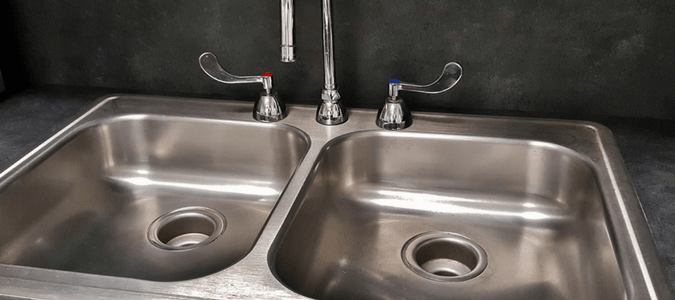
One of the kitchen appliances we often take for granted is our garbage disposal. We don’t think much about the mechanics behind the device that allows us to scrape our dinner dishes into the sink without having to worry about clogging up our drains. When’s the last time you thought about what you’re putting down your garbage disposal?
Eggshells in Garbage Disposal and Other Common Questions Answered
Below we’ll take a look at how this workhorse appliance does its job, and how to make sure it keeps working into the future.
How Do Garbage Disposals Work?
To understand the care and “feeding” of our garbage disposals, we need to have a better understanding of how they work. In most cases, the units consist of a metal canister that has rotating blades or impellers. Some have additional grinding mechanisms for additional functionality. When food enters the unit, the blades spin rapidly to crush/grind up the particles to make them small enough to enter the drain without clogging it.
What Do I Need To Know About Using My Disposal?
Whenever you use your garbage disposal, be sure the food is in small pieces. Shoving entire bunches of celery or broccoli down the disposal just makes unnecessary work for the unit and can burn out the motor.
Each time you use it, be sure to start the water running before turning it on, and allow the water to run the entire time the unit is on, and for a few seconds afterward. Doing so allows the disposal to do its job properly by moving the food around, and helps the waste go down the drain without clogging.
While the blades aren’t sharp like a blender or food processor, they can still become too dull to do their job properly. Most experts recommend occasionally grinding ice cubes in the disposal to sharpen things up again.
If you’re getting a stinky smell from your disposal, try running a few citrus peels or ice made from vinegar through the disposal to freshen the unit and kill odor-causing bacteria.
What Can (and Can’t) I Put Down a Garbage Disposal?
Your garbage disposal unit is actually intended only for small organic food particles that remain on your plate after eating, as well as the bits you trim off produce when cleaning it up.
Avoid sending any of the following down your garbage disposal:
- Fibrous foods like celery, potato peels, artichokes and asparagus, all of which can wrap around the grinding mechanism and lock up the motor.
- Corn husks and corn cobs, both of which are too fibrous and dense to be ground up properly.
- Bacon grease, melted butter, and cooking oils. These can dull your disposal’s blades, clog your pipes and create unpleasant odors.
- Eggshell waste.
- Starchy foods like rice and beans, which can form a paste and clog the unit.
- Non-food items such as cigarette butts, sponges, tea bags and plant clippings.
- Pork, beef and other hard bones.
- Anything made of plastic, foil, glass, stone or metal.
If any do fall in, be sure to use plenty of water to flush them out.
What’s Wrong With Egg Shells In The Garbage Disposal?
Manufacturers don’t often address egg shells in their list of items which you can (or can’t) put down your disposal, and most homeowners never see their in-sink disposer’s instruction manuals, since units are often installed when a house is built. No wonder homeowners are confused!
While some people believe that egg shells help keep disposal blades sharp and dislodge small bits of food that can accumulate in the grinding mechanism, others mention the impact that the egg’s membrane can have on the proper functioning of the shredder ring and that shell particles can build up in pipes. Without a definitive answer from companies that make garbage disposals, homeowners may want to err on the side of caution. The convenience of putting your egg shells down the disposal may not be worth the risk of shortening the life of your unit or paying for costly repairs.
What’s A Convenient Way To Dispose of Egg Shells And Kitchen Waste?
What’s a convenient—and Earth-friendly—way to dispose of your kitchen waste (including those pesky egg shells)? Consider composting your organic kitchen waste. You can put a small composting canister right next to your sink so that it’s easy to put items into the container instead of your garbage disposal.
The following food products can all be safely composted:
- Fruit and vegetable rinds, seeds, and produce that goes bad in the fridge
- Coffee grounds
- Egg shells
- Tea bags
- Dead flower arrangements and houseplants
- Potato chips, crackers, pretzels, old pasta, bread and oatmeal
- Leftover casseroles, spaghetti and other non-meat mystery foods in your fridge
Grease, fat and meat and bones aren’t safe for the compost pile, so your best solution for disposal is to put them in your trash. Once you have this kitchen waste, you can set up a compost pile in your backyard to turn this food waste into rich soil to help provide nutrients to your grass, plants and garden.
Having Trouble With Your Garbage Disposal?
If you’ve managed to clog your sink, or your garbage disposal won’t work, it might be time to call out the experts. The plumbing experts at ABC Home & Commercial Services would be happy to lend a hand to get your sink up and running in no time. And if you’re in the market for a new disposal unit, we’d be happy to recommend a few models and install one for you in a snap.
